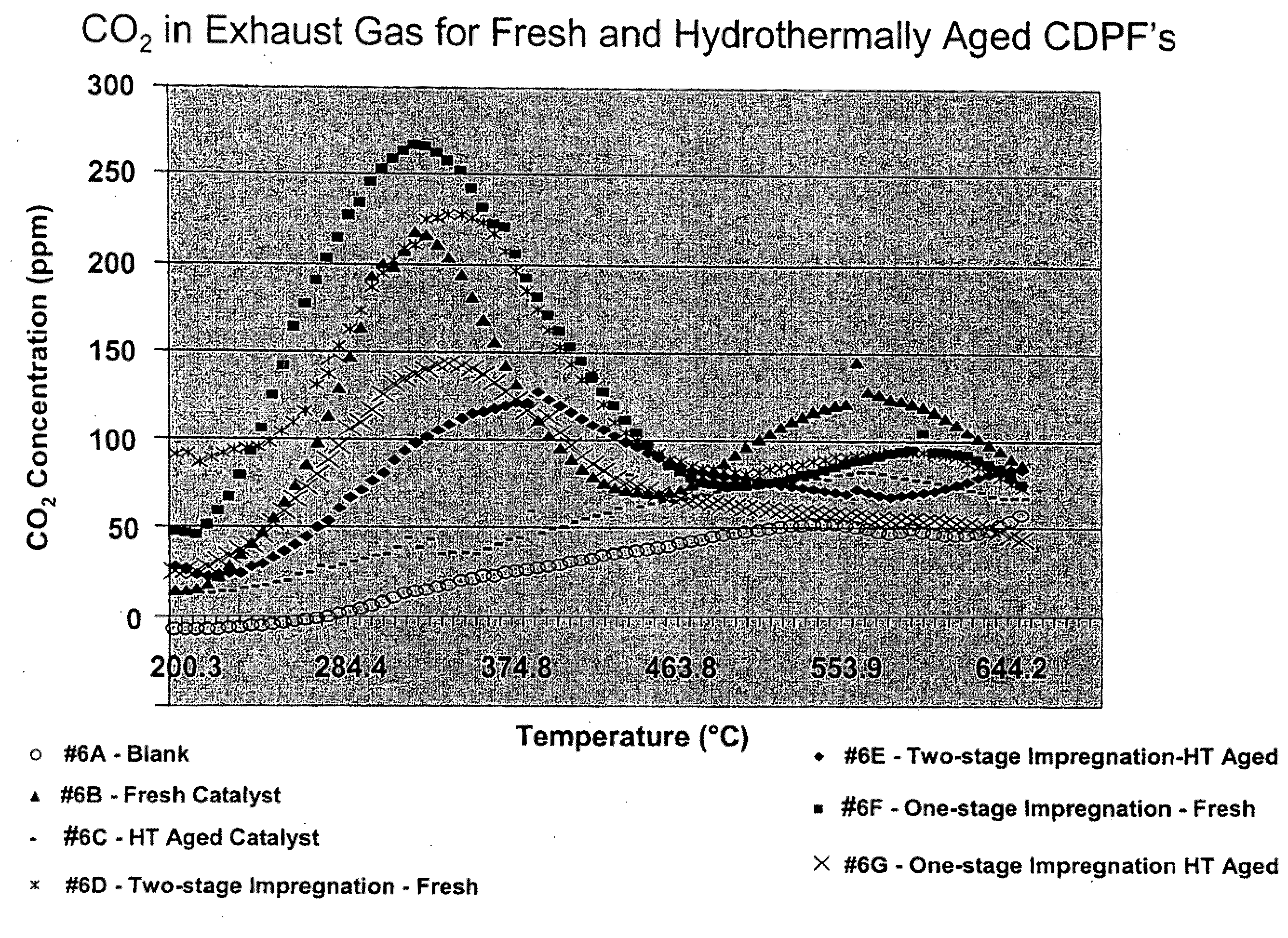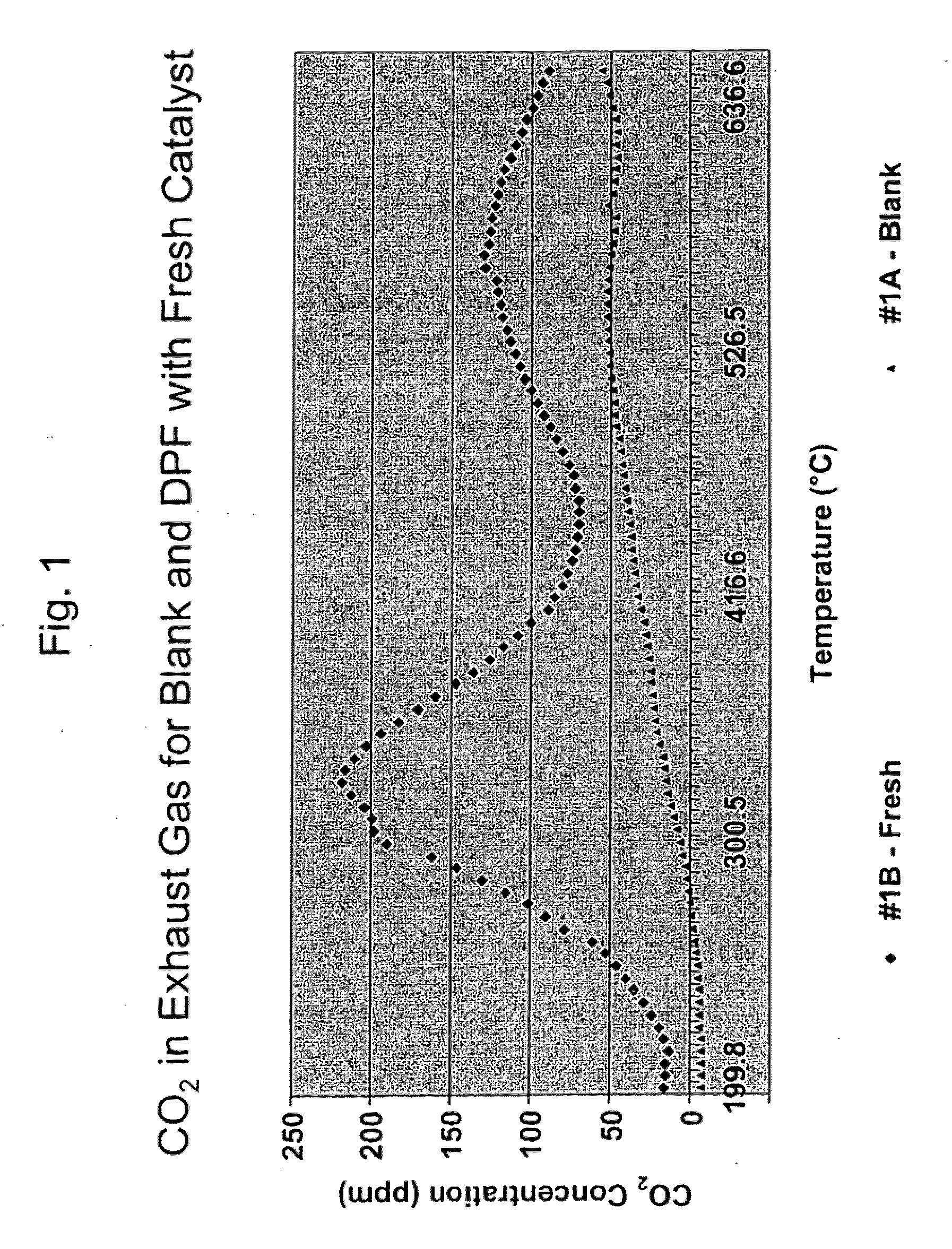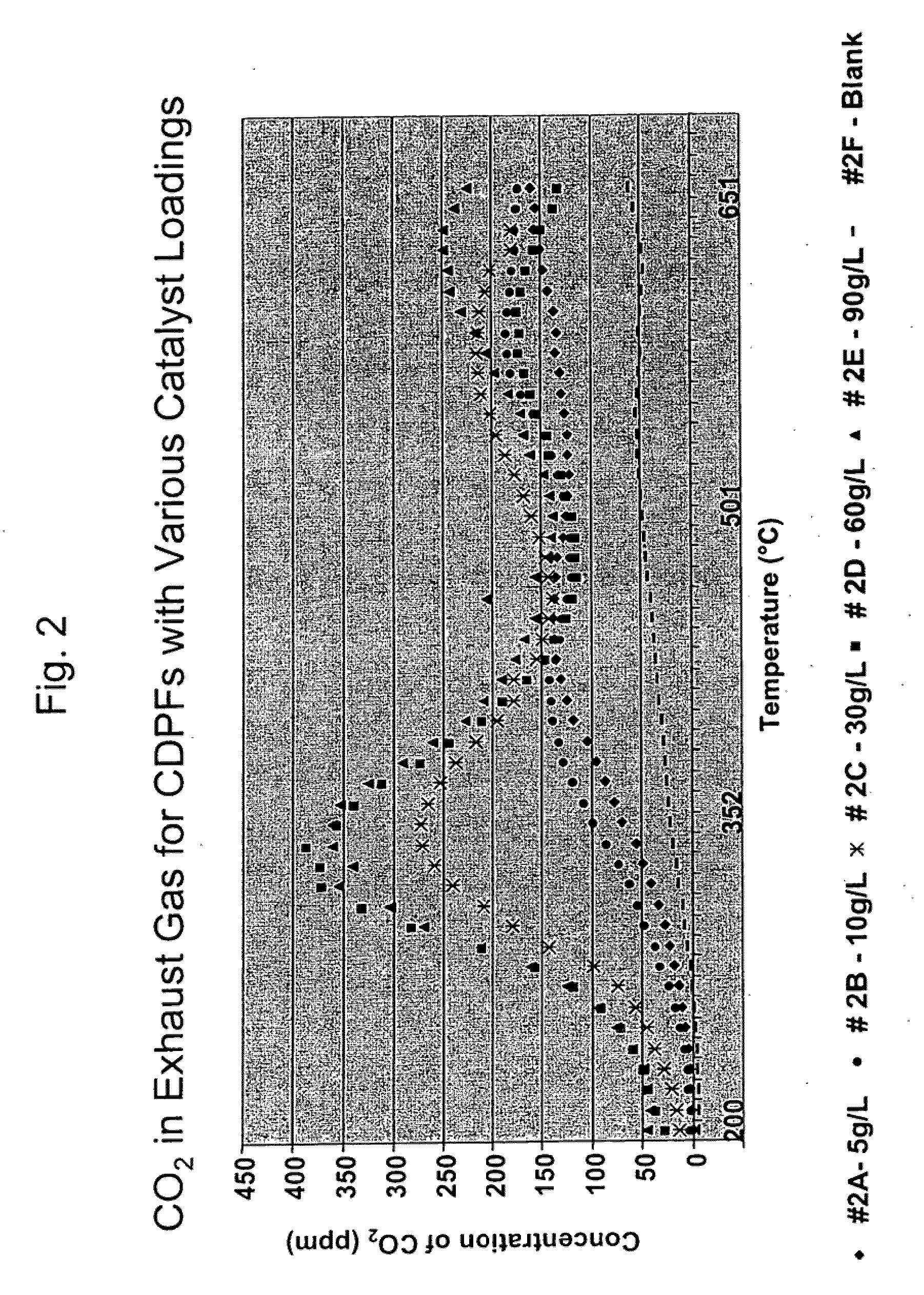Platinum group metal-free catalysts for reducing the ignition temperature of particulates on a diesel particulate filter
a technology of catalysts and catalyst compositions, which is applied in the direction of physical/chemical process catalysts, arsenic compounds, separation processes, etc., can solve the problems of high levels of nosub>x/sub>and particulates in the exhaust gas of diesel engines, the cost of fuel efficiency, and the filter may become plugged, so as to reduce the ignition temperature of particulates
- Summary
- Abstract
- Description
- Claims
- Application Information
AI Technical Summary
Benefits of technology
Problems solved by technology
Method used
Image
Examples
example 1
Measurement of the CO2 Concentration in the Offgas from the Soot-Loaded Substrate as a Function of Temperature
[0112]Soot-loaded DPF substrates were contacted with a gas stream that comprised about 10% oxygen, about 8% water, about 150 ppm NO, and about 150 ppm NO2. The temperature of the substrate was increased from 200° C. to 650° C. or 700° C., and the concentration of CO2 in the exhaust gas was monitored as a function of temperature.
[0113]FIG. 1 shows a graph of the concentration of CO2 in the exhaust stream versus temperature for a substrate that had been loaded with 2 g / L of soot, with and without a catalyst composition according to an embodiment of the invention. FIG. 1A, the lower curve of FIG. 1, is a graph of the CO2 concentration in the exhaust gas with a blank substrate, a soot-loaded cordierite substrate that does not contain a catalyst composition according to an embodiment of the invention. The catalyst compositions of Examples 1-5 comprise cerium, cobalt, and strontiu...
example 2
Effect of Catalyst Loading on the CO2 Concentration in the Offgas
[0119]FIG. 2 shows a series of curves for the concentration of CO2 versus temperature for substrates with various loadings of a catalyst according to an embodiment of the invention. All of the loadings are on the basis of the oxides.
[0120]Curve 2A is a curve for a substrate with a catalyst loading of 5 g / L, curve 2B for a catalyst loading of 10 g / L, curve 2C for a catalyst loading of 30 g / L, curve 2D for a catalyst loading of 60 g / L, curve 2E for a catalyst loading of 90 g / L, and curve 2F is a curve for a blank, a substrate that does not contain a catalyst.
[0121]As shown in curve 2A, the low temperature CO2 peak for a substrate with a catalyst loading of 5 g / L occurred at about 450° C., compared to about 550° C. in the blank (curve 1A). Increasing the catalyst loading to 10 g / L decreased the temperature of the low temperature peak to about 425° C., as shown in curve 2B. Increasing the catalyst loading from 5 g / L to 10 ...
example 3
Surface Areas and Pore Volumes of Aluminum Oxide Washcoats Prepared from Aluminum Nitrate and Colloidal Alumina
[0126]FIG. 3 shows graphs of the BET surface areas in m2 / g versus target loading in g / L for aluminum oxide washcoats prepared from aluminum nitrate and colloidal alumina.
[0127]Curve 3A of FIG. 3 shows a graph of the BET surface area versus loading for the aluminum oxide washcoats prepared from aluminum nitrate. Curve 3B of FIG. 4 shows a graph of the surface area versus loading for aluminum oxide washcoats prepared with NYACOL® AL20 colloidal alumina.
[0128]As shown in curve 3A, the BET surface area of a substrate that comprised alumina washcoats prepared from aluminum nitrate decreased from about 8 m2 / g to about 3 m2 / g as the target loading was increased from 0 to about 40 g / L. The BET surface areas with alumina washcoats that were prepared with colloidal alumina were higher than the BET surface areas of the corresponding alumina washcoats that were prepared with aluminum o...
PUM
 Login to View More
Login to View More Abstract
Description
Claims
Application Information
 Login to View More
Login to View More - R&D
- Intellectual Property
- Life Sciences
- Materials
- Tech Scout
- Unparalleled Data Quality
- Higher Quality Content
- 60% Fewer Hallucinations
Browse by: Latest US Patents, China's latest patents, Technical Efficacy Thesaurus, Application Domain, Technology Topic, Popular Technical Reports.
© 2025 PatSnap. All rights reserved.Legal|Privacy policy|Modern Slavery Act Transparency Statement|Sitemap|About US| Contact US: help@patsnap.com



